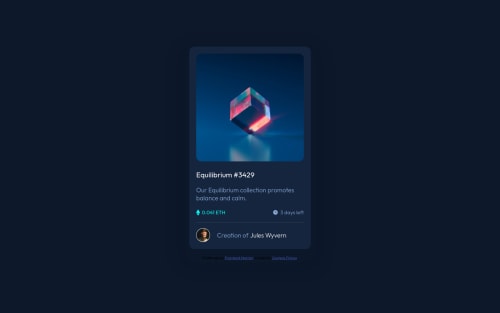NFT preview card component

Solution retrospective
I'm having difficulty trying to do the active state for the image on the NFT preview card component. Feedbacks on it will be appreciated.
Please log in to post a comment
Log in with GitHubCommunity feedback
No feedback yet. Be the first to give feedback on Finney's solution.
Join our Discord community
Join thousands of Frontend Mentor community members taking the challenges, sharing resources, helping each other, and chatting about all things front-end!
Join our Discord